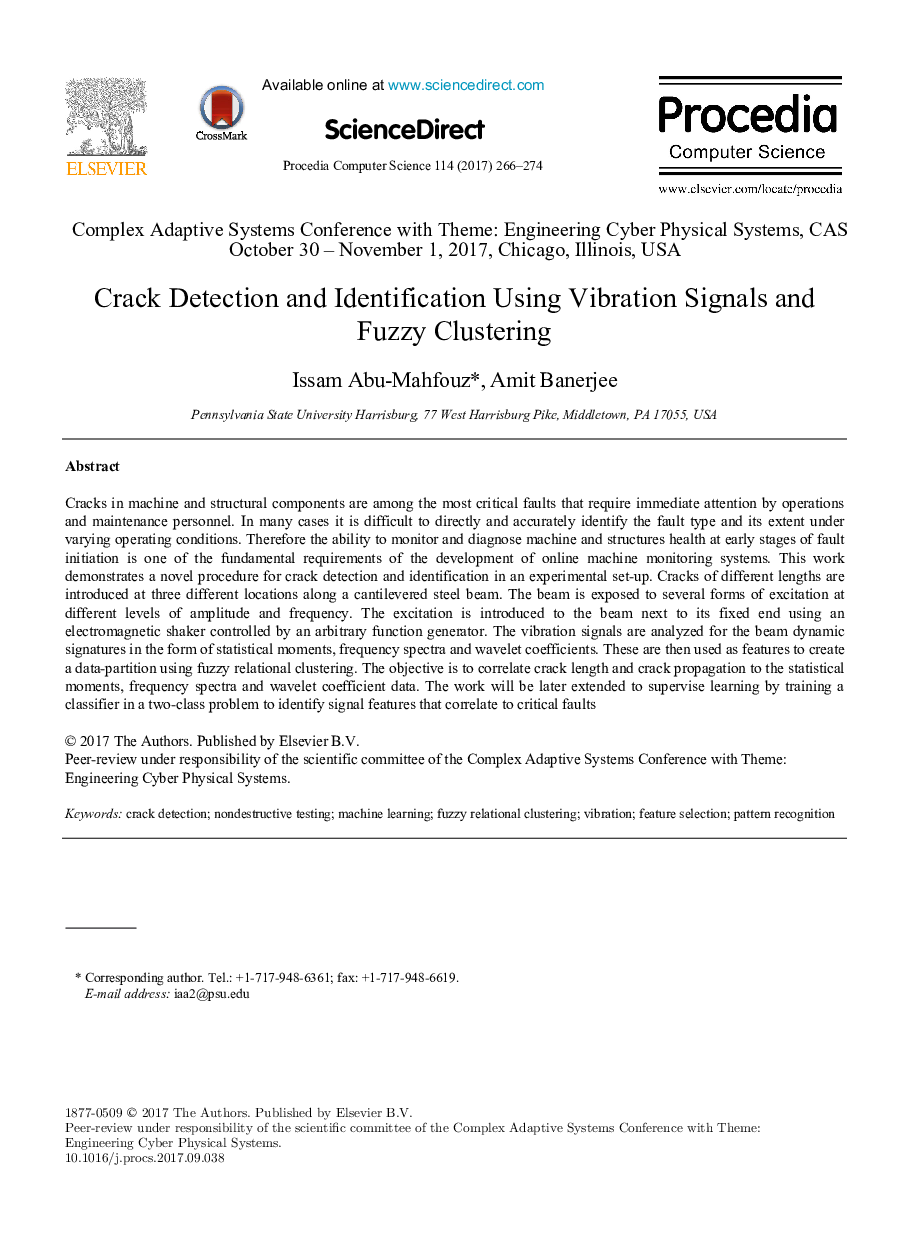| کد مقاله | کد نشریه | سال انتشار | مقاله انگلیسی | نسخه تمام متن |
|---|---|---|---|---|
| 4960538 | 1446501 | 2017 | 9 صفحه PDF | دانلود رایگان |
Cracks in machine and structural components are among the most critical faults that require immediate attention by operations and maintenance personnel. In many cases it is difficult to directly and accurately identify the fault type and its extent under varying operating conditions. Therefore the ability to monitor and diagnose machine and structures health at early stages of fault initiation is one of the fundamental requirements of the development of online machine monitoring systems. This work demonstrates a novel procedure for crack detection and identification in an experimental set-up. Cracks of different lengths are introduced at three different locations along a cantilevered steel beam. The beam is exposed to several forms of excitation at different levels of amplitude and frequency. The excitation is introduced to the beam next to its fixed end using an electromagnetic shaker controlled by an arbitrary function generator. The vibration signals are analyzed for the beam dynamic signatures in the form of statistical moments, frequency spectra and wavelet coefficients. These are then used as features to create a data-partition using fuzzy relational clustering. The objective is to correlate crack length and crack propagation to the statistical moments, frequency spectra and wavelet coefficient data. The work will be later extended to supervise learning by training a classifier in a two-class problem to identify signal features that correlate to critical faults
Journal: Procedia Computer Science - Volume 114, 2017, Pages 266-274
